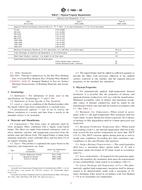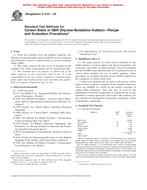1.1 This guide provides assistance in the selection of active integrative sampling methods, in which the volatile organic analytes are collected from air over a period of time by drawing the air into the sampling device, with subsequent recovery for analysis. Where available, specific ASTM test methods and practices are referenced.
1.2 Guidance is provided for the selection of active sampling methods based either on collection of an untreated air sample (whole air samples) or selective sampling using sorbent concentration techniques that selectively concentrate components in air. Advantages and disadvantages of specific collection vehicles are presented.
1.3 This guide does not cover the use of cryogenically cooled field sampling devices used in some automated analysis systems. Detailed instructions for cryogenic recovery of compounds captured as whole air samples or thermally desorbed from sorbents are typically covered in standard methods for sample analysis and are beyond the scope of this guide.
1.4 Both thermal and solvent desorption techniques for sample recovery are discussed.
1.5 Organic compounds are classified on the basis of vapor pressure as very volatile, volatile, semivolatile and nonvolatile. Physical characteristics of many volatile organic compounds (VOCs) are provided to aid in selection of sampling techniques for VOC measurement. Semivolatile and nonvolatile organic compounds are defined in the guide to help guide users avoid misidentifying compounds that are not covered in this guide.
1.6 This standard does not purport to address all of the safety concerns, if any, associated with its use. It is the responsibility of the user of this standard to establish appropriate safety and health practices and determine the applicability of regulatory limitations prior to use.
Product Details
- Published:
- 10/01/2003
- Number of Pages:
- 9
- File Size:
- 1 file , 120 KB


